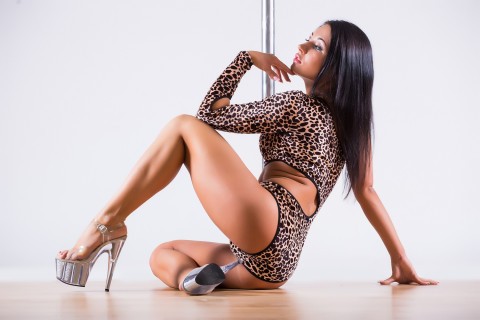Walking into a high-end strip club for the first time is nothing like what most people imagine. The dim lighting, the polished floors, the subtle thrum of music under the hum of conversation it’s immersive, almost cinematic. And then there’s the dancer, moving across the stage with a kind of effortless command that’s mesmerizing. Striptease is not just about seduction or nudity; it is a full-bodied performance, a form of storytelling told through movement, expression, and rhythm.
Anyone can step onto a stage, but true mastery requires understanding yourself, your audience, and the space you occupy. Striptease is a craft as much as it is an art form, and the most captivating performers are those who treat it as such. They respect their body, their craft, and the audience, and through this respect, they create something that goes beyond mere entertainment it becomes an experience, a narrative, a shared moment of connection.
Learning the Craft: Studios, Workshops, and Professional Guidance
The path to becoming a skilled striptease dancer rarely begins on a club stage. It starts in studios where instructors guide students through dance fundamentals, floor work, pole techniques, and expressive movement. These workshops emphasize more than just sensuality; they focus on posture, precision, rhythm, and stage presence. The environment feels disciplined yet creative, structured yet expressive, much like a ballet or jazz studio, but infused with a unique erotic energy that is distinct to this form of dance.
High-quality training integrates performance psychology as well. Students are encouraged to explore their comfort zones, experiment with persona, and develop the subtle skills that make a performance compelling. How to hold a gaze, how to pace movements, how to create tension and release all of this is part of the education. Dance is as much about emotion as motion, and successful striptease performers understand how to convey that without words.
Beyond formal workshops, many dancers learn through mentorship. Experienced performers pass down insights that no class can fully teach how to navigate a challenging audience, how to adjust to different stages, how to create moments that feel spontaneous even when choreographed. The best mentors do more than teach moves; they cultivate presence, confidence, and artistry.
What Separates a Performer from a Star
Watching a skilled dancer is hypnotic. Each movement is deliberate yet fluid, a combination of technical expertise and personal flair. Stagecraft involves understanding angles, lighting, and audience perspective. A performance is not simply a series of moves; it is a continuous narrative that engages and entices, drawing the audience into a world crafted by the dancer.
Versatility is key. A performer who can seamlessly transition between styles burlesque, contemporary, floor work, pole has a significant advantage. High-end venues often host themed nights or private events that demand adaptability. Reading the crowd, sensing energy, and adjusting the performance in real time are crucial skills. Success comes from an understanding that striptease is interactive; the dancer and audience are co-creators of the moment.
Costume and aesthetics also play a pivotal role. Wardrobe is not decoration it is an extension of the dancer’s persona and storytelling. From sequins and lace to dramatic heels and makeup, every detail enhances the narrative, projecting a character that captivates attention and communicates confidence. The most effective performers treat every element hair, nails, outfits, lighting as part of their creative toolkit.
Iconic Venues and Inspirational Spaces
While skills are honed in studios, real-world experience is irreplaceable. Some of the world’s most iconic clubs have become training grounds for high-level performers. Berlin’s KitKatClub is legendary for its avant-garde, experimental shows where dancers push boundaries in both movement and persona. New York’s House of Yes blends circus, burlesque, and striptease into immersive experiences, encouraging performers to explore theatricality and creativity. London’s The Box challenges dancers with elaborate staging and high expectations, cultivating a space where skill, artistry, and professionalism are paramount.
Performing in these venues teaches lessons far beyond choreography. Dancers learn to command attention under scrutiny, adapt to varying stage setups, and engage audiences with subtlety and charisma. Networking, exposure, and professional growth naturally follow, creating opportunities that extend beyond the club.
The Dedication Behind the Art
Physical conditioning is critical. Core strength, flexibility, and endurance are foundational for sustaining demanding routines. Many performers incorporate yoga, pilates, or targeted strength training into daily regimens. These exercises are not for show they are necessary for maintaining control, executing complex moves, and projecting grace and confidence.
Mental resilience is equally vital. Striptease requires vulnerability; the ability to transform nervousness into compelling energy distinguishes exceptional performers. Confidence, poise, and the capacity to own a space are developed over time, through experience and reflection. A performer’s mindset is just as important as their technique.
Professionalism also encompasses financial acumen. High-level dancers manage bookings, social media, branding, and self-promotion. They invest in costume, training, and personal development, understanding that longevity in this field comes from both artistry and business strategy.
Life as a Performer
The life of a professional striptease dancer is multifaceted. It is social yet disciplined, creative yet structured. Work often spans nights, including club performances, private events, or residencies. Camaraderie among performers is common; mentorship, collaboration, and shared learning help sustain careers and nurture artistic growth.
Travel is a significant aspect of the profession. Residencies and guest performances expose dancers to new audiences, performance styles, and creative approaches. These experiences broaden perspective and refine technique, contributing to a richer, more versatile performance style.
Many performers describe their work as transformative. The craft teaches self-expression, confidence, and body awareness. It challenges performers to embrace vulnerability while projecting strength, creating a unique form of empowerment that extends far beyond the stage.
Misconceptions and Realities
It’s a mistake to assume that striptease is easy or superficial. Skill is honed over years, and success demands continuous learning, practice, and self-discipline. Not all venues are glamorous, and navigating the social and professional dynamics of clubs requires tact, diplomacy, and resilience.
The most respected dancers view striptease as an art and a profession. They balance creativity with practicality, investing in skill development, personal health, and professional growth. Their work is deliberate, refined, and executed with intention.
Why Striptease is a True Art Form
At its core, striptease communicates story and emotion without words. It is choreography, theater, and personal expression fused together. The audience is drawn not by nudity alone, but by presence, artistry, and the tension of live performance.
The best performances are immersive. Each gesture, pause, and movement conveys narrative. It’s not voyeurism; it’s a shared, dynamic interaction. The dancer guides the audience through emotion and sensation, creating an experience that is as memorable as it is exhilarating.
Stepping Into the World
For those curious about pursuing striptease, observation and practice are essential. Attend performances, enroll in workshops, and seek mentorship from experienced performers. Developing body awareness, stage presence, and personal expression is critical. The journey requires dedication, patience, and self-reflection, but it offers rich rewards: confidence, artistic fulfillment, and mastery of a craft that few understand fully.
Embrace the mindset that striptease is both personal and performative. The deeper your understanding of yourself and your artistic voice, the more compelling and unique your performance will be.
Striptease is more than it appears. It blends discipline, creativity, and emotional expression into a captivating, immersive art form. For those willing to commit, respect the craft, and explore their creativity, it offers a powerful, empowering experience both on stage and beyond.













